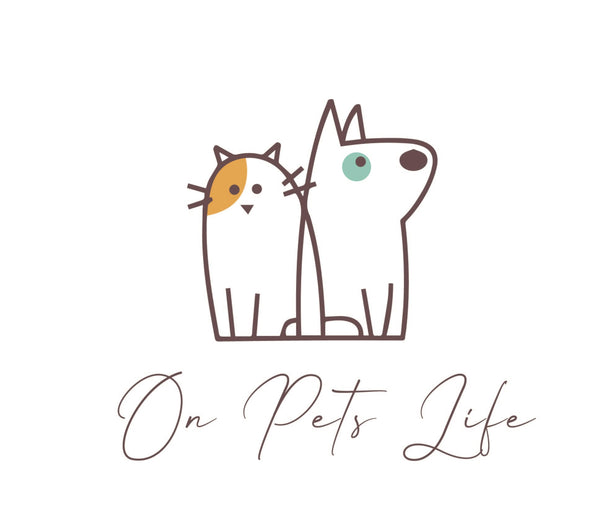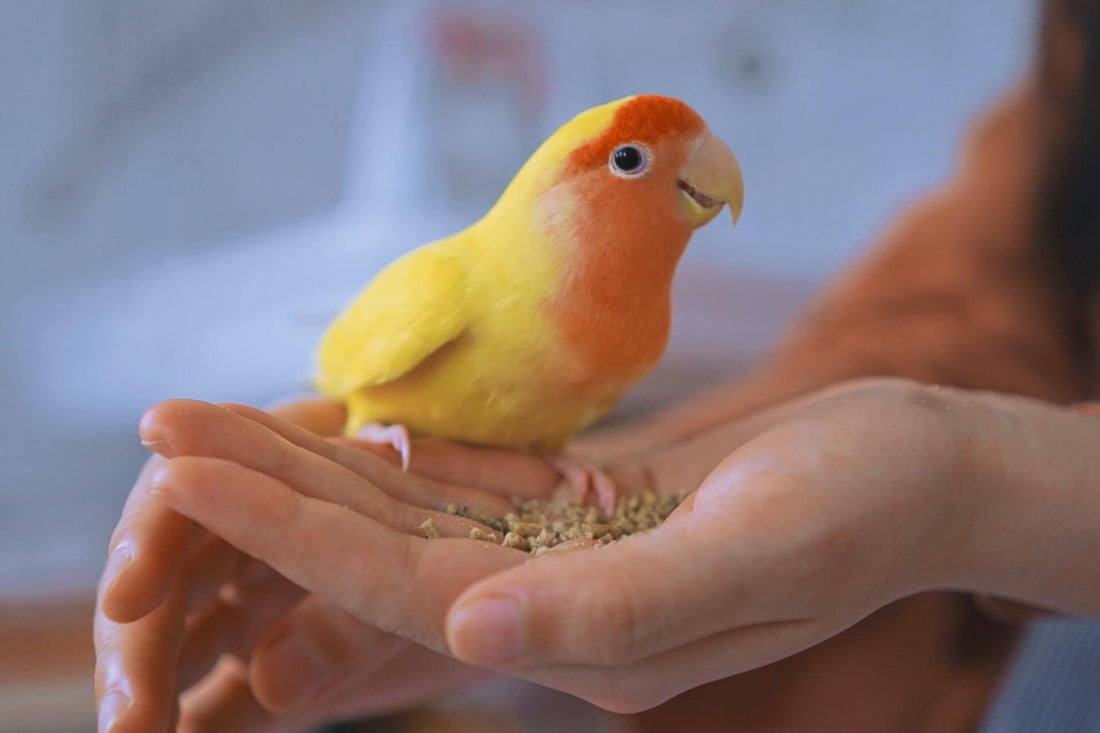Let’s talk about the second part of training parrot skills now.
Eat vegetables and fruits
In terms of diet, most parrots can be divided into six types: small and medium dry seed type, small and medium moist omnivorous type, medium and large dry nut type, medium and large moist omnivorous type, nectar sucking type and plateau omnivorous type.
But no matter what the parrot's diet is, the tender shoots are essential feed. In feeding, we can replace with pasture and vegetables and fruits.

The feeding diets of lovebirds, cockatiels and budgerigars are medium and small dry seed types. Their staple food is all kinds of seeds. But greenery is also an equally important food.
Green plant foods provide them with rich vitamins, cellulose, water, etc., so generally parrots are highly receptive to various green leafy vegetables, but they are not very fond of fruits(rosy-faced Lovebird accept apples and other fruits).
Medium and large parrots may not know how to eat or dare not eat fruits and vegetables. At this time, we need to stop the water supply.
Don't think that stopping the water supply is abusing birds. In fact, no matter what kind of parrot, it is difficult to drink liquid water at any time. Or that 24-hour uninterrupted water supply is an incorrect feeding method. In a natural diet, birds must get a lot of water from fresh vegetables and fruits.
When the weather is not hot, healthy parrots can go without water for about 12 hours. You can remove the drinking fountain before going to work, and then feed vegetables and fruits after returning home. This will be successful with a high probability. If there are still some stubborn birds who only accept dry feed, you might as well drop some clean water drops on the vegetables and fruits to guide them to eat.
Status recognition and return to the birdcage independently
All parrots are social animals, and if they are social, there will be grades. Before adulthood, hand-raised parrots are gentle and cute to their owners, but once they become adults, they start to bark, bite people irritably and even ignore their owners. This is because of a change in the bird's self-perception. The relationship between parrots and owners has changed from parental to group membership. And if there are reactions such as ignoring people and biting people, it means that the parrot recognizes the owner as a low-level group member.
For status recognition, the most important point is that the parrot must not be allowed to land on the owner's head. Many people think that the landing of a parrot on their head is a sign of closeness and fun. But in fact, this is a kind of status challenge between parrots, and those with high status can occupy high terrain perches. This is prone to occur in young birds that learn to eat independently, and the owner must correct it in time.
The correct way is to take down the parrot over and over again. Similarly, the high place in the home cannot let the parrot land. Let the parrot develop a good habit of landing at a designated place from an early age.
With the basis of status identification, then training to return to the cage is very simple. Catching the birds into the cage with your hands will cause them to resent the cage. The correct way is to open the cage door and hold the bird into the cage. When the bird enters the cage, you should immediately give a verbal command and give a reward. Over time, the bird can get into the cage with a verbal command.
Avoid parrot bites
A parrot's beak is used to bite through solid objects such as nuts, seeds, and bark. This causes their bite force to be very strong, and even a bite by a budgerigar is very painful. Relatively speaking, parrots are one of the easiest pets to attack people. Let's analyze the biting behavior of parrots from three points.

Tentative biting
Parrots are very intelligent birds with a wealth of curiosity. During the period of learning independence, parrots expand the food variety through repeated trial bites. In a human-raised environment, this curiosity tends to develop the habit of biting.
The biting behavior that occurs during this period is the easiest to stop. Once the biting behavior occurs, stop it immediately, and don't take chances.
Active aggressive bite
This is mostly seen in more mature hand-raised birds, and the first active aggressive bite will not be too intense. The bad-tempered parrot that frequently and violently bites must be "trained" by the owner himself.
The first thing to do when a parrot bites is to not evade, do not show any fear. As long as you back away, the smart parrot will know that its attack is effective, and will make an attack action next time to strengthen its behavior.
Attack in estrus
This is more difficult to control. A good-tempered parrot, stimulated by sex hormones during estrus, may also turn into a bad-tempered parrot. However, the target of the attack has changed from the host to other people, possibly other family members, or strangers, guests.
The attack during estrus is because the parrot does not have access to the same kind, and mistakenly regards the closest owner as a partner (a common behavioral problem in hand-raised birds), and wants to protect the partner. There is no good solution to this kind of biting problem.
You can insist on socialization training for parrots from a young age. If the hurtful behavior is really unstoppable, then try to put the bird in a cage before the guest visits to prevent unnecessary trouble.
What's the best way to stop birds from biting? Training by hitting is definitely not an option, parrots are too fragile to be beaten and they don't understand what it means. Parrots don't understand master's scolding too.
The best way is to pinch your index finger and thumb and stick it into the parrot's mouth so the parrot can't bite. If you are bitten on other parts, don't show pain, be sure to be strong. Over time, the parrot will not think that the bite is effective and reduce the behavior of biting.
Travel
The outside environment is not safe for parrots, cats, dogs, birds of prey, cars and small children are very dangerous to parrots. The author does not recommend traveling with parrots for recreational purposes.
If you must take the parrot out, it is important to choose the right location and weather, a sunny and windless spring day of 20 to 30 degrees Celsius, open areas or parks with few tall trees, no vehicles and dog walkers. If you are concerned that the parrot will fly away, be sure to trim feathers and wear a flight leash to the parrot.

Before reaching a safe travel location, be sure to put the bird in a safe outside box and pay attention to the outside temperature. And do not travel with parrots in windy weather, even parrots after trimming their feathers may fly away in strong winds.
Fixed-point toilet training
Although birds have abandoned part of their ability to store feces in order to fly, most parrots have a certain ability to delay excretion. During the brooding period, parrots will use a nest for a long time. If parent birds are constantly excreting in their nests, not only will predators be attracted, but hygiene problems may also arise. So parrots "evolved" the ability to delay excretion.
The first step in fixed-point toilet training: observe the excretion interval of the birds, which may vary from 3 to 20 minutes; and most birds have an instinct to try not to excrete as much as possible on the owner.
Knowing the parrot's excretion gap, then proceed to the second step: when it is about to excrete, place it in the designated place and issue a command. If the parrot successfully excretes, it will be rewarded, and then repeat the training process. Over time, your parrot will learn to automatically go to the toilet at a fixed point. However, we must pay attention to the position of the toilet not too far away, otherwise the parrot will occasionally be unable to bear and then directly excrete.


